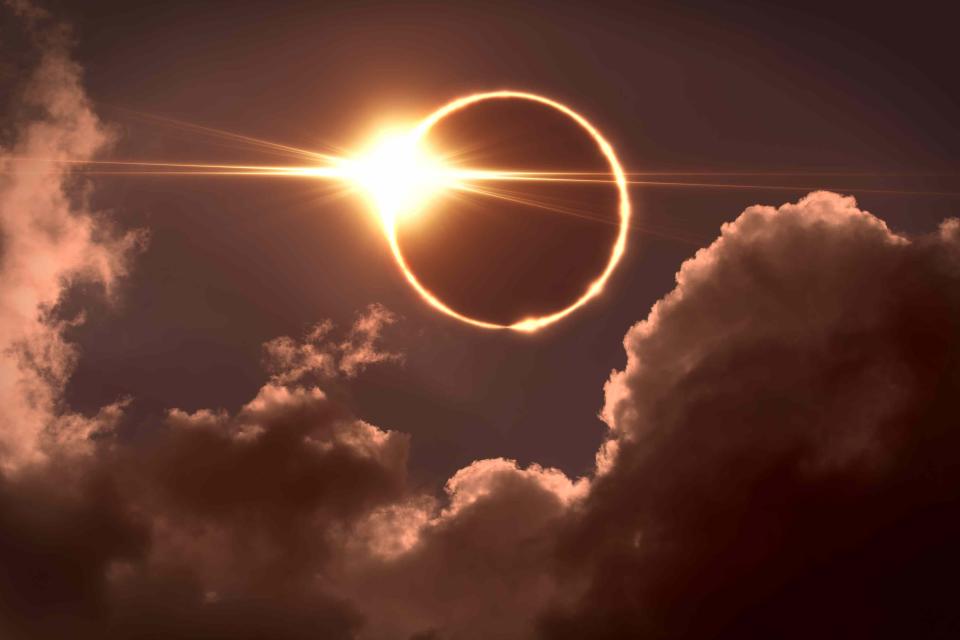Beware of Fake Solar Eclipse Glasses—Here's How to Know if Yours Are Real Before April 8
Test your solar eclipse glasses before the celestial event to verify their authenticity.

Pitris / Getty Images
A once-in-a-lifetime total solar eclipse will occur on April 8, traveling through many states across the country. In order to safely view the rare phenomenon, you will need solar eclipse glasses. But before buying a pair, it's important to verify their authenticity as fake eclipse glasses are on the rise.
According to a release by the American Astronomical Society (AAS), counterfeit solar eclipse glasses are currently polluting the marketplace as more people rush to buy a pair in the weeks leading up to the event.
Related: Warby Parker Is Giving Away Free Solar Eclipse Glasses—Here's How to Get a Pair
Why It's Important to Wear Solar Eclipse Glasses
A total solar eclipse occurs when the moon passes between the sun and earth at exactly the right moment and the moon blocks all of the sun’s light. The only time it is safe to view the eclipse without eye protection is during the brief total phase of a total solar eclipse, when the moon completely blocks the sun’s bright face, according to NASA.
Exposing your eyes to the sun without proper eye protection during a solar eclipse can cause "eclipse blindness." This exposure to the light can cause temporary or permanent damage to your retinas. It can take a few hours to days after viewing the eclipse to notice any damage.
How to Identify Fake Solar Eclipse Glasses
In order to determine if your eclipse glasses are safe to wear, put them on indoors before April 8 and look around. "You shouldn’t be able to see anything through them, except perhaps very bright lights, which should appear very faint through the glasses," the AAS states. "If you can see anything else, such as household furnishings or pictures on the wall, your glasses aren’t dark enough for solar viewing."
If the glasses pass this test, take them outside on a sunny day and look around. You shouldn't see anything through the glasses, except maybe the sun's reflection off a shiny surface. If they pass this test, too, look at the sun through the glasses for less than a second. According to the AAS, you should see a sharp-edged, round disk that’s comfortably bright.
How to Authenticate Solar Eclipse Glasses
Solar eclipse glasses are safe if they comply with the UV, visible, and IR transmittance requirements of the ISO 12312-2 standard for filters for direct observation of the sun, the AAS states. But you can't check for a statement of that compliance on the packaging, as it can be falsely printed.
To help you authenticate your glasses, the AAS Solar Eclipse Task Force has compiled a list of vendors of safe solar viewers. The task force has confirmed that all known U.S. and European manufacturers of solar viewers have had their products tested by properly accredited labs and shown to be safe. Check the list to ensure the vendor you purchased your glasses through is on the list.
Note: if you don't see a vendor listed on the AAS solar eclipse website, it doesn't mean their products are unsafe. The AAS lists more than 100 sellers of solar viewers, but there are hundreds more, especially on sites like Amazon, Etsy, and eBay, and the organization is unable to verify all of them.
Read the original article on Martha Stewart.

